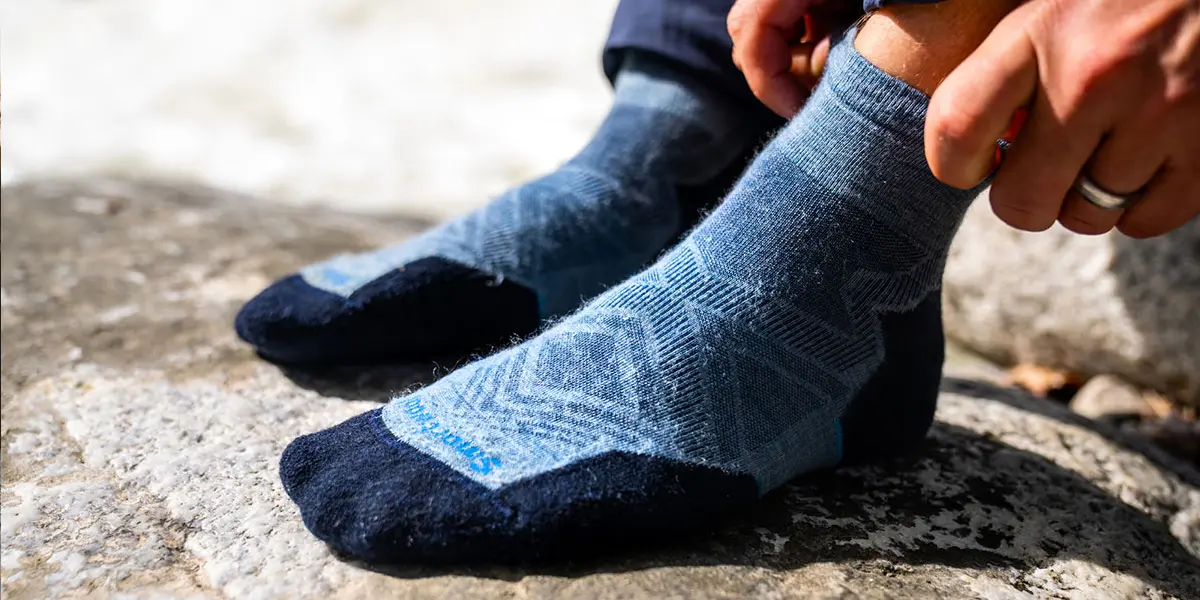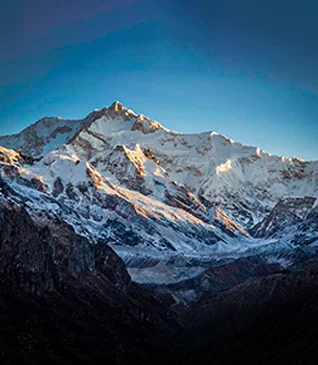A Complete Guide for Trekkers
Trekking is a thrilling experience, but the difference between a great trek and a painful one often comes down to your shoes. Good trekking shoes can save your feet from injuries, blisters, and discomfort on the trail. However, with countless brands and styles flooding the market, finding the right pair can be both exhausting and confusing. It's not just about choosing a size or a popular brand, it's about understanding your trekking needs, the terrain, and the quality of the shoes you wear.
To simplify your search for the perfect trekking shoes, our team of experts has put together a detailed guide covering everything from essential features to proper aftercare, ensuring you're well-prepared for any trail ahead.
Importance of Good Trekking Shoes

A high-quality trekking shoe provides essential support and stability to your feet and ankles, helping to prevent painful blisters, sprains, and long-term joint issues that often arise when hiking over uneven terrain. Its durable, thoughtfully engineered sole offers superior traction on slippery rocks, muddy tracks, or loose scree, reducing the risk of slips and falls that can turn a memorable adventure into a painful ordeal. Good trekking shoes also incorporate breathable yet water-resistant materials, ensuring that your feet stay dry during sudden rain showers or when crossing shallow streams, key to maintaining warmth and preventing hypothermia in cooler climates. Additionally, the precise fit and cushioning of a well-designed trekking shoe distribute your body weight evenly, reducing fatigue on long ascents and descents and allowing you to cover more ground with less strain.
Know Your Terrain

Before buying trekking shoes, consider the type of terrain you'll be walking on.
- Rocky Terrain: Look for shoes with excellent grip and firm soles to handle uneven surfaces and sharp rocks.
- Snowy Trails: Go for waterproof shoes with good insulation and deep lugs to prevent slipping.
- Muddy Trails: A waterproof membrane is essential. Shoes should be easy to clean and quick to dry.
- Forest Trails: Opt for breathable shoes with good grip for damp and shaded paths.
Criteria for Choosing the Ideal pair of Trekking shoes

When you’re ready to choose the perfect pair of trekking shoes, keep these simple pointers in mind:
- High-Ankle Support: Always pick shoes that cover your ankles. They help prevent sprains and give you extra stability when you climb over rocks or walk downhill.
- Light, Fast-Dry Outer Material: Look for synthetic fabrics like polyester or nylon, even if leather is still around, synthetics dry faster and weigh less. Make sure the outer is waterproof or at least water-resistant, Gore-Tex membranes are the gold standard here.
- Reliable Midsole and Insole: Your midsole should resist abrasion to help stop blisters. Many high-ankle boots include this by default. For the insole, choose a cushioned, quality option, Ortholite insoles are a great pick for long-term comfort.
- Flexible, Grippy Sole: The sole is your contact with the trail, so go for a well-known brand like Vibram if you can. It should bend easily underfoot (unlike stiff snow-boot soles) and match the shape of your foot, avoid narrow soles if you have wide feet, or you’ll slip forward on steep paths.
- Secure Fit with Room to Grow: Always try on shoes with the socks you plan to wear. Your toes need about a thumb’s width of space at the front, and a half-size or full-size up gives your swollen feet room on long hikes or when you wear thicker socks.
- Strong Lacing System: Check that the eyelets and hooks don’t pull out and that you can tighten or loosen different zones, good lacing helps lock your heel in place and avoids chafing.
- Good Breathability: Even waterproof shoes should let sweat escape. A breathable lining keeps your feet dry from the inside and stops odors.
- Weight vs. Durability Balance: Lighter shoes save energy on long days, but very light models can wear out faster. Choose something that suits how often and how hard you hike.
- Break-in Time: Wear new shoes on short walks or easy hikes for 2–3 hours before your big trek, that way you’ll know how they feel and can avoid surprises on the trail.
- Watch for Counterfeit Bargains: If a deal seems too good, double-check the shop and the brand, first-copy knockoffs often fall apart quickly and can cost you more in the long run.
- Invest If You Trek Often: A combination of Gore-Tex membrane, Ortholite insoles, and Vibram soles is pricier but lasts much longer. If you’re on the trail frequently, it’s usually worth the extra cost. Otherwise, mid-range shoes still offer good protection and comfort for the occasional trekker.
Socks Matter Too

Just as a sturdy pair of trekking shoes forms the foundation of a safe and comfortable hike, a good pair of socks plays an equally vital role in keeping your feet happy over rocky trails and long miles. Opting for moisture-wicking, padded socks ideally crafted from wool or advanced synthetic blends, ensures that sweat is drawn away from your skin, reducing the risk of chafing and the breeding grounds for painful blisters. Longer socks not only add an extra layer of cushioning against shoe bites but also shield your ankles from errant twigs, rough rocks, and underbrush that can scrape or irritate exposed skin. When thoughtfully paired with well-fitting trekking shoes, the right sock-and-shoe combo works together to support your feet, distribute pressure evenly, and maintain optimal temperature and dryness throughout the day. Especially on longer treks, this dynamic duo can make the difference between a blister-free, fatigue-resistant journey and one plagued by hot spots, discomfort, and frequent stops, so never underestimate the power of good socks in your hiking arsenal.
Popular Trekking Shoe Brands in India
Here are some tried-and-tested brands:
- Quechua (Decathlon) – Affordable and decent for beginners.
- Wildcraft – Durable and good for moderate treks.
- Columbia – High-quality, suited for serious trekkers.
- Salomon – Premium range with excellent features.
- Trek 100 or MH100 from Decathlon – Good waterproof options with ankle support.
Prices can range from INR 3,000 to INR 15,000+, depending on features and brand.
Caution: Be wary of fake or "first-copy" branded shoes often sold at discounted prices.
Renting vs. Buying
Deciding whether to rent or buy your trekking gear often comes down to how often you hit the trails and how much you want to spend. If you only hike every now and then or are testing the sport for the first time, renting gear can be a budget-friendly choice, you get everything you need without a big cost, and you don’t have to worry about storing or maintaining it afterward. On the other hand, buying your own boots, poles, or backpacks makes more sense if you plan to trek regularly. Owning gear offers better long-term value, because the more you use it, the more you save compared to repeated rental fees. Plus, having your own equipment means you can break it in for a perfect, custom fit, giving you greater comfort on long walks and rough paths. Finally, when you buy you know exactly what quality and durability to expect, so you can rely on your trusted gear every time you head out.
Shoes Maintenance Tips

To make your trekking shoes last even longer here are a few key tips:
- After every trek, clean your shoes carefully by gently brushing away dirt with a soft brush and using clean water; avoid harsh detergents that can damage materials.
- Once washed, allow your shoes to dry completely at room temperature, do not place them near direct heat sources, and instead let them air-dry naturally.
- Store your shoes in a cool, dry place away from direct sunlight, and tuck silica gel pouches inside to keep moisture away.
- Take a moment regularly to inspect your trekking shoes for any signs of wear and tear, look for thinning soles, frayed stitching, or cracked leather.
- When you notice worn-out soles, torn fabric, or a loss of traction, it’s time to replace your shoes with a new pair to keep your feet safe and comfortable.
Choosing trekking shoes is not about fashion, it is about comfort, safety, and making your trekking experience smooth and memorable. Whether you're walking on the lush green trails of Hampta Pass or climbing snowy slopes in Kedarkantha, your shoes are your most trusted gear. Investing in a reliable, purpose-built shoe may feel costly at first, but by protecting your feet, enhancing your performance, and extending the lifespan of your footwear, it ultimately saves time, money, and discomfort, making every step on the trail safer and more enjoyable. Invest wisely, choose what suits your terrain and foot type, and you’ll thank yourself with every step on the trail.





.webp)










.webp)


